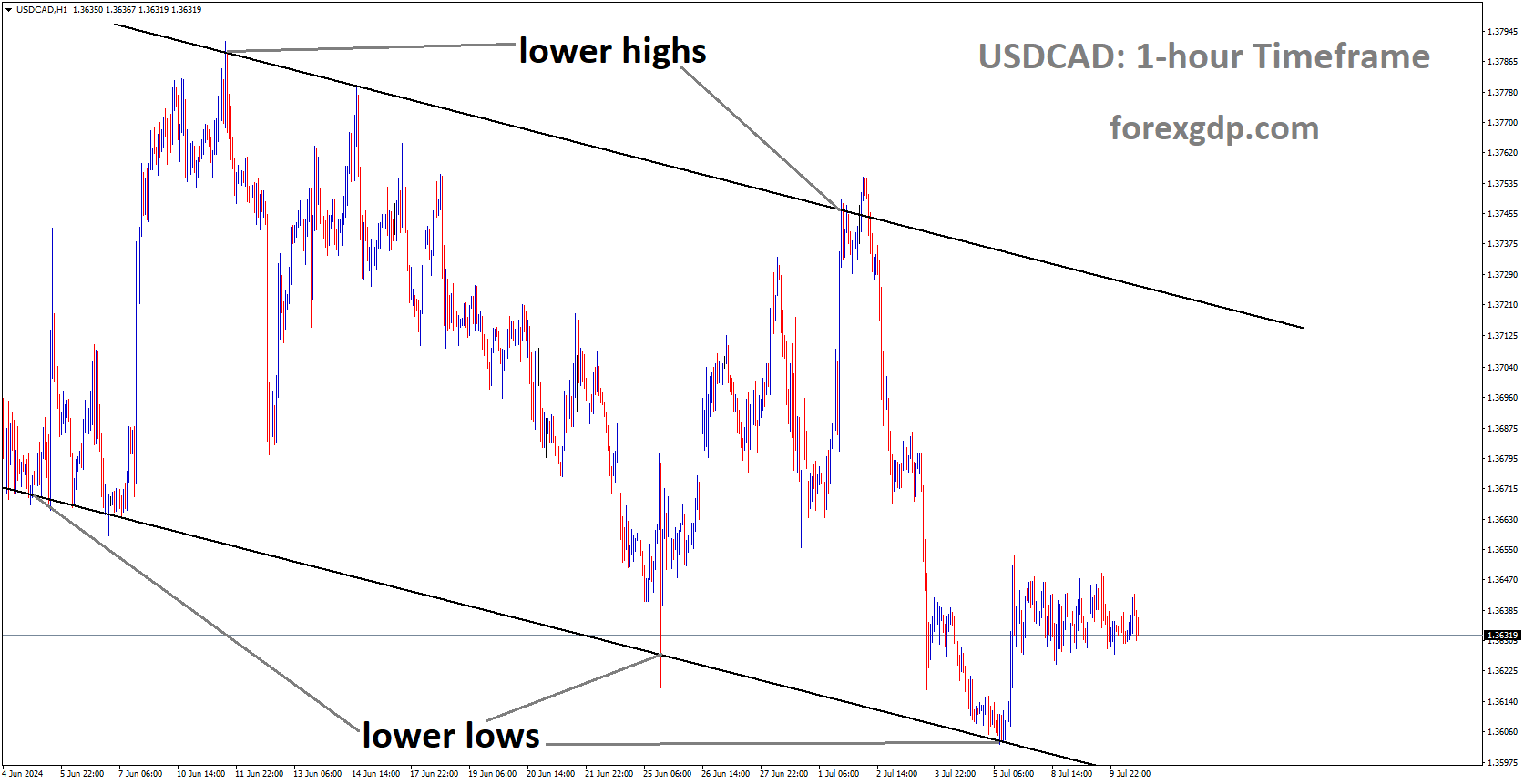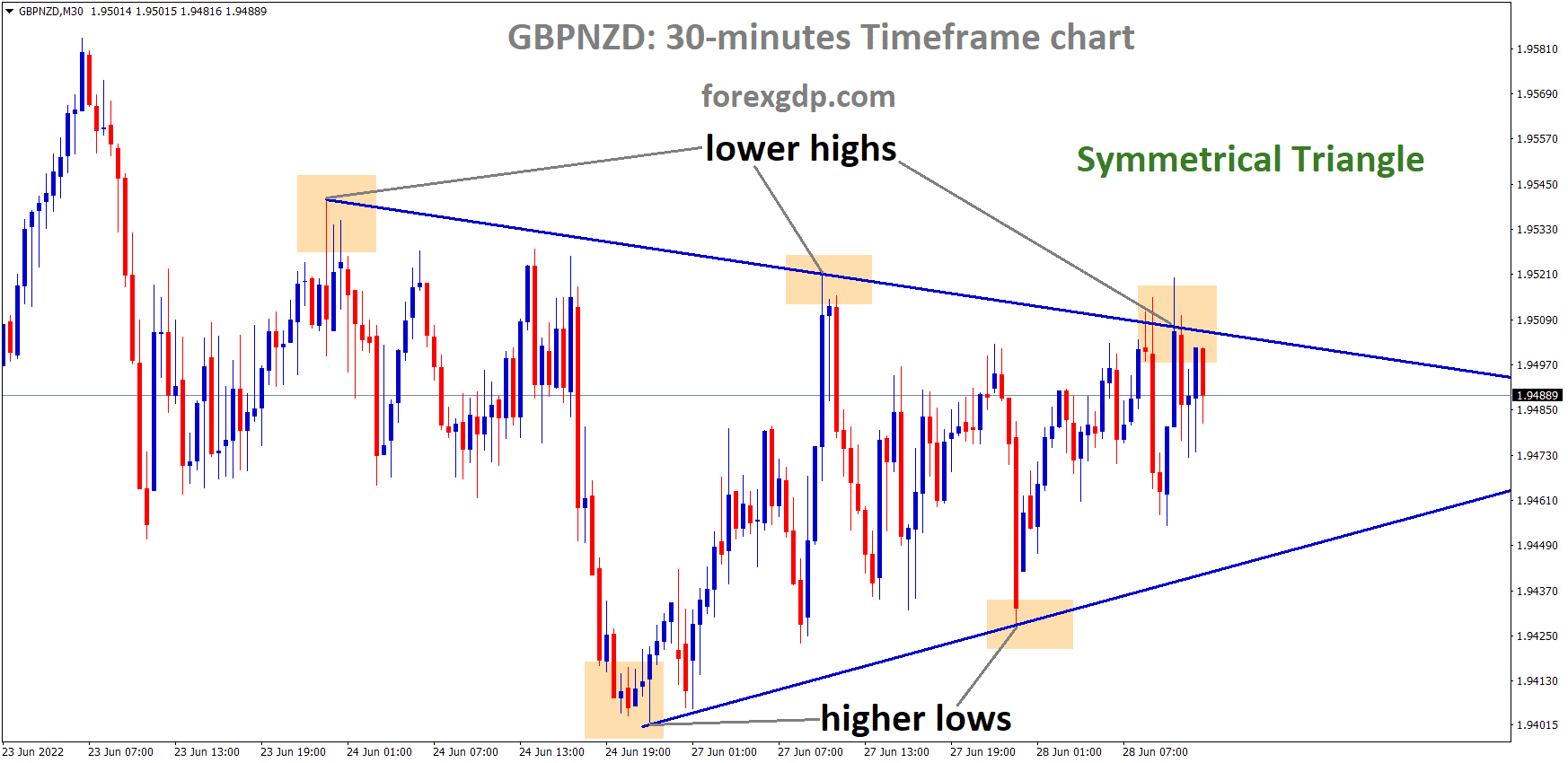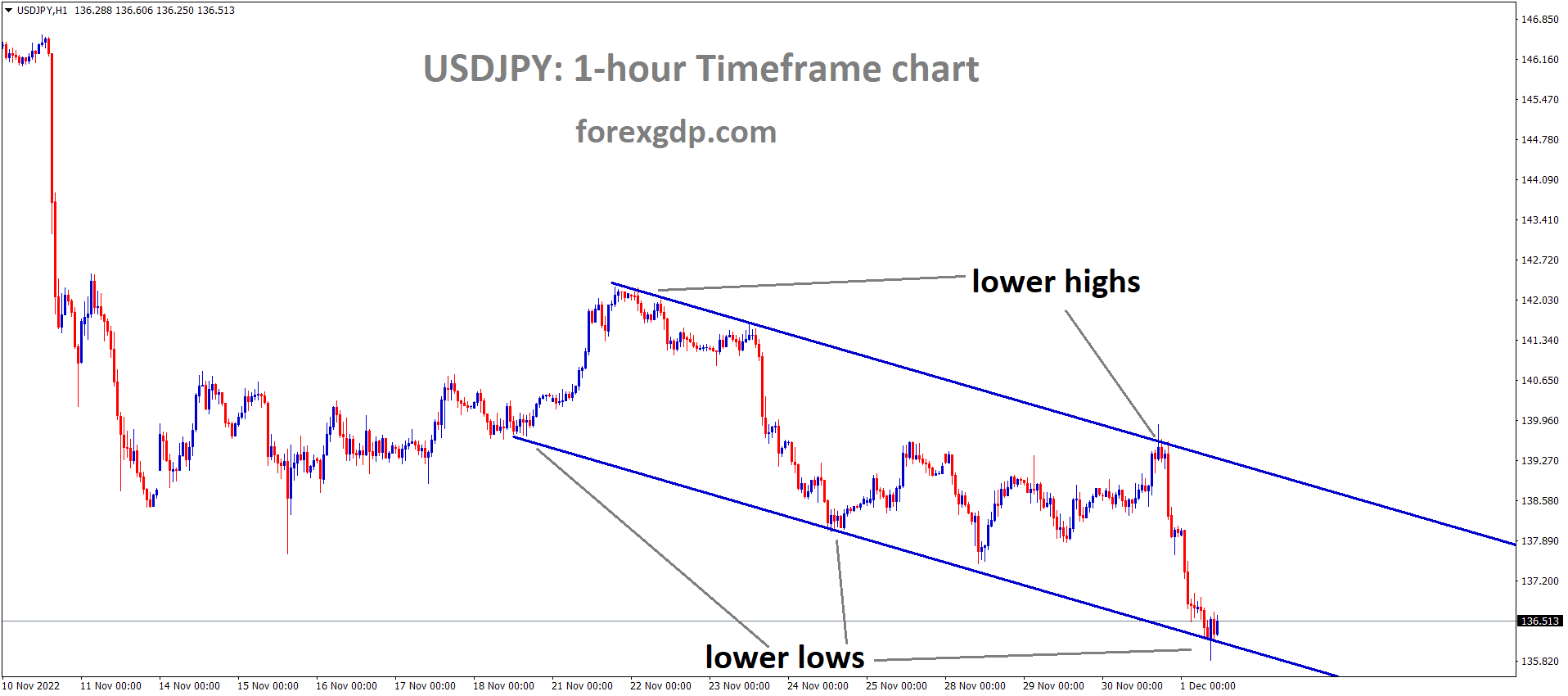USDCAD is moving in box pattern and market has rebounded from the support area of the pattern
The Canadian Dollar’s Struggle: What’s Behind the Drop?
The Canadian Dollar (CAD), heavily linked to commodity prices, is facing tough times. One of the major reasons behind its current woes is the ongoing decline in crude oil prices. Let’s dive deeper into what’s happening, why it matters, and what we can expect moving forward.
Crude Oil Prices and Their Impact
The Role of West Texas Intermediate (WTI)
West Texas Intermediate (WTI) crude oil is a significant player in the global oil market. Recently, its prices have been on a downward trend, continuing to fall for four consecutive days. One of the reasons for this slump is the decreased impact of Hurricane Beryl. Initially, the storm was expected to cause significant disruptions in oil production in Texas, one of the major oil-producing regions. However, the damage was far less than anticipated. This led to a quicker-than-expected resumption of operations for many oil and gas companies. Ports reopened, and most producers and facilities ramped up output swiftly, even though some areas still faced power restoration issues.
China’s Influence on Oil Demand
Another critical factor affecting oil prices is the demand from China, the world’s largest crude importer. Recent data shows a decrease in China’s Consumer Price Index (CPI) growth, which signals weaker consumer demand. In June, the CPI increased by just 0.2% annually, down from a 0.3% rise in May, and below market expectations of a 0.4% increase. This decline in inflation indicates a slowdown in consumer activity, impacting oil demand and consequently pushing prices down.
The Federal Reserve’s Stance
Insights from Jerome Powell’s Testimony
Federal Reserve Chairman Jerome Powell’s recent testimony before the US Congress added another layer of complexity to the situation. Powell acknowledged that while there are signs of improving inflation data, the Federal Reserve remains cautious. He stated, “More good data would strengthen our confidence in inflation.” However, he also noted that the data from the first quarter did not support the greater confidence in the inflation path needed to cut rates. This cautious stance by the Fed suggests that interest rates might remain higher for longer, which could negatively impact the US economy, the largest consumer of oil.
USDCAD is moving in box pattern
Market Expectations and Upcoming Data
Traders are eagerly awaiting the second semi-annual testimony by Jerome Powell and speeches by other Federal Reserve officials, such as Michelle Bowman and Austan Goolsbee. These events, coupled with the upcoming US Consumer Price Index (CPI) data, are likely to provide more insights into the future direction of oil prices and the strength of the US economy.
How This Affects the Canadian Dollar
The Connection Between CAD and Oil Prices
Canada is a major exporter of oil to the United States, so the value of the Canadian Dollar is closely tied to oil prices. When oil prices fall, the CAD typically weakens. This trend is evident in the current scenario, where the CAD is struggling due to the drop in WTI prices. The USD/CAD pair has been trading around 1.3640, indicating a stronger US Dollar against the Canadian Dollar.
Economic Implications for Canada
A weaker CAD can have mixed implications for Canada’s economy. On the one hand, it can make Canadian exports cheaper and more competitive in the global market. On the other hand, it increases the cost of imports, which can lead to higher inflation domestically. Balancing these effects is a challenge for Canadian policymakers and businesses alike.
USDCAD is moving in Descending channel and market has rebounded from the lower low area of the channel
Looking Ahead: What Can We Expect?
Potential Market Movements
The future movement of oil prices and the CAD will largely depend on several factors. These include the extent of recovery in oil production post-Hurricane Beryl, the demand trends from major oil consumers like China, and the policy decisions by the Federal Reserve. Traders and analysts will be closely monitoring these elements to make informed predictions about the market’s direction.
Key Indicators to Watch
To get a sense of where the market might head next, it’s important to keep an eye on a few key indicators:
- Oil Production Levels: Any disruptions or changes in production levels can significantly impact prices.
- Consumer Demand Data: Especially from major economies like China and the US.
- Federal Reserve Announcements: Speeches and testimonies by Fed officials, as well as key economic data releases.
Summary
The Canadian Dollar is currently under pressure, largely due to the falling crude oil prices. The diminished impact of Hurricane Beryl, coupled with weak demand from China and cautious signals from the Federal Reserve, have all contributed to this scenario. Moving forward, the interplay between these factors will continue to shape the CAD’s performance and the broader economic landscape. Keeping an eye on production levels, consumer demand, and Fed announcements will be crucial for understanding and anticipating future market movements.
Don’t trade all the time, trade forex only at the confirmed trade setups
Get more confirmed trade signals at premium or supreme – Click here to get more signals , 2200%, 800% growth in Real Live USD trading account of our users – click here to see , or If you want to get FREE Trial signals, You can Join FREE Signals Now!









